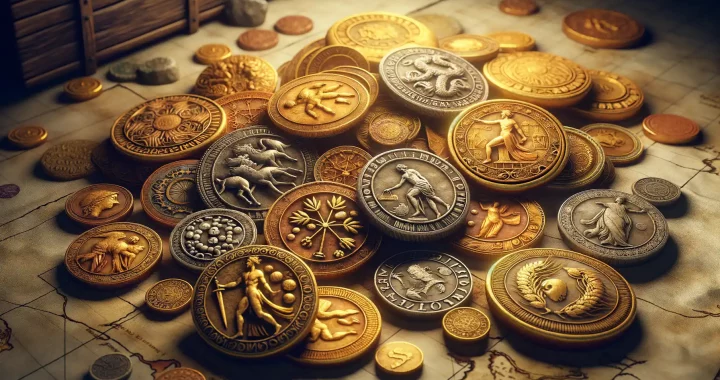Introduction to Coins in Ancient Economies
Imagine holding a piece of history right in your hands—a small, circular object that once jangled in the pockets of merchants or jingled on the belts of soldiers. That’s the magic of ancient coins! These seemingly modest pieces of metal were far more than just a medium of exchange; they were miniature storytellers and power symbols, silently weaving their way into the lifeblood of old-world economies. But what role did these shiny tokens play in shaping the destinies of empires, markets, and everyday people?
A Revolution in Trade
Before coins, trade relied heavily on barter systems, where goods had to be directly exchanged—imagine trading goats for grain or jugs of olive oil for fabric! It was cumbersome and often unfair. Coins changed everything. With standardized weights and values, they became a universal language understood from the bustling markets of Athens to the caravan trails of Persia.
- Gold and silver coins embodied wealth and stability, ideal for long-distance trade.
- Copper coins served local markets, perfect for buying daily essentials like bread and wine.
Coins didn’t just simplify commerce; they opened doors to economic possibilities previously unimagined. They allowed people to save wealth, calculate prices, and dream beyond the limits of barter.
Symbols with a Purpose
More than tools of trade, ancient coins told stories. They bore the faces of emperors, the fierce profiles of gods, or majestic images of eagles and ships, serving as tiny propaganda posters. Think of a coin stamped with the profile of Alexander the Great—it’s not just currency; it’s a declaration of power, influence, and legacy.
In a sense, every coin acted as a messenger, whispering tales of victories won, rulers crowned, and cultures thriving. Next time you glance at an old coin, remember: it’s not just money—it’s history in the palm of your hand.
Economic Functions of Ancient Coins
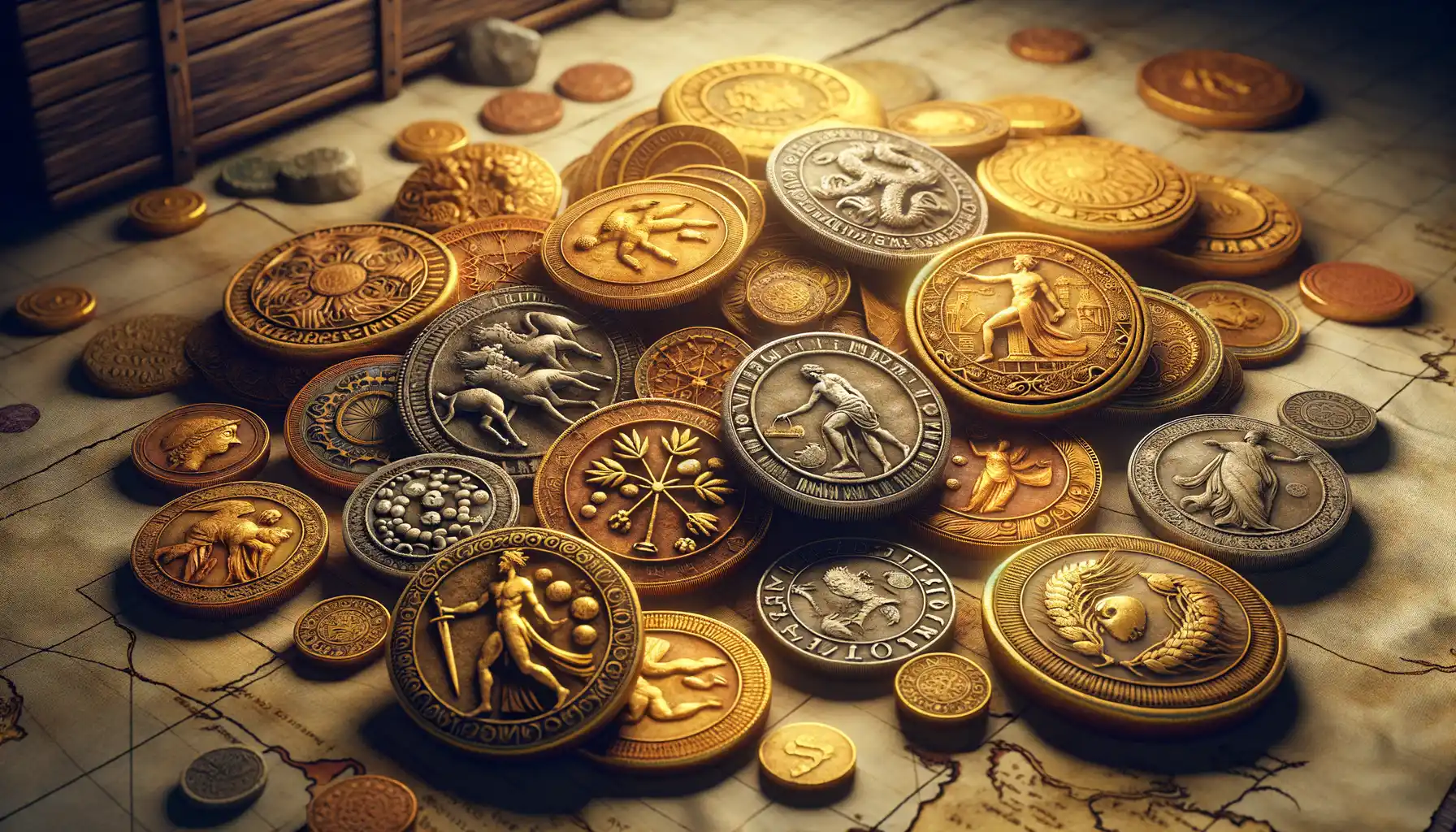
Coins as Catalysts for Economic Vibrancy
Step into the bustling markets of ancient Rome or Greece. Imagine vendors shouting, traders bargaining, and coins—those tiny metal discs—clinking in pouches. But these weren’t just shiny trinkets; they were the lifeblood of thriving economies, fueling trade and shaping societies.
Ancient coins had an incredible way of simplifying transactions. No more bartering awkward amounts of grain for a loaf of bread! With coins, people could assign precise value to goods and services, creating a system of unprecedented efficiency. Think about it: how else could a merchant trade silk from China for Roman glass without something universally understood like currency? That’s the magic of coins—they turned chaotic exchanges into smooth, predictable commerce.
Practical Powers Hidden in Plain Sight
It wasn’t just about paying for goods, though. Coins carried out multiple economic tasks, including:
- Store of wealth: Saving a few silver drachmas? You might be safeguarding your family’s future.
- Unit of account: They made bookkeeping possible—no small feat for traders managing vast inventories.
- Encouraging local markets: Ever tried investing in a business with seashells? Coins spurred investment opportunities by their very design.
In short, ancient coins were more than just currency; they were instruments of trust, symbols of stability, and vehicles of economic growth. Just imagine life without them—chaotic, isn’t it?
Cultural and Symbolic Significance of Currency
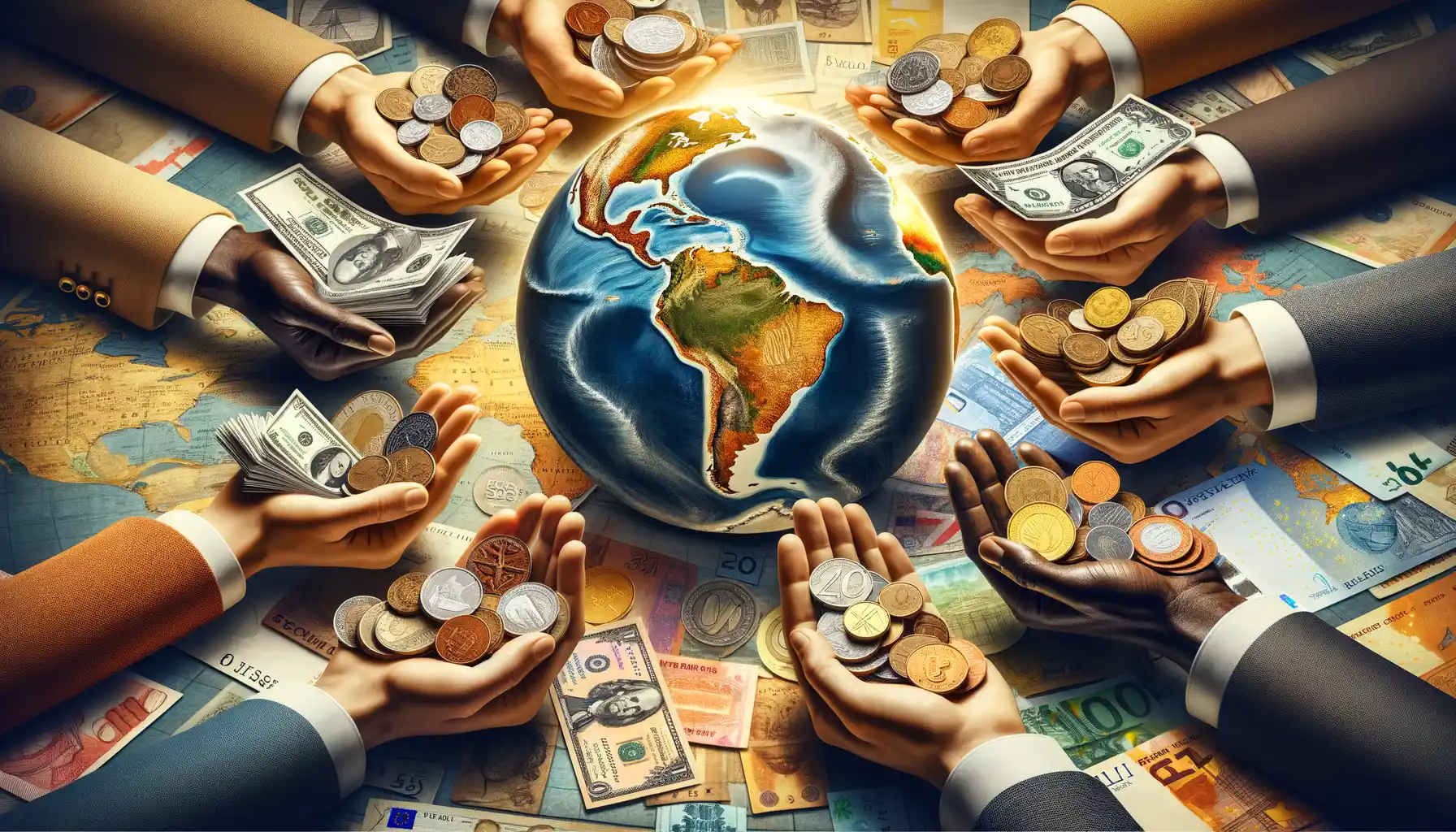
Coins as Carriers of Identity and Power
Take a moment to think about an ancient coin—not just as an object, but as a story frozen in metal. Beyond trade, coins were statements of identity, pride, and power. Each coin carried the face of a ruler or a symbol of a city, whispering messages like, “Here lies the strength of Rome” or “Athens rules the seas.” These weren’t just tools for commerce; they were like tiny pieces of propaganda in your pocket.
A ruler’s portrait on a coin wasn’t random—it was a declaration of legitimacy and divine connection. For example, Alexander the Great’s coins often depicted Hercules, tying his rule to the strength and heroism of myth. And those intricate symbols? They were stamps of cultural pride: Roman coins showcasing Mars or Venus, or Indian punch-marked coins featuring sacred animals. These symbols resonated deeply with the people who held them.
- Messages of sovereignty: Coins declared who held power and where that power extended.
- National identity: Every intricate design signaled cultural values, whether militaristic, religious, or economic.
Currency in Rituals and Beliefs
Coins did more than just clink together in marketplaces. They were intimately tied to the spiritual lives of ancient people. Ever heard of coins being buried with the dead? The Greeks placed obols under tongues as fare for Charon, the ferryman of the Underworld. In this way, currency became sacred, a literal ticket to the afterlife.
Beyond funerary rites, coins also found their place in offerings. Temples gleamed with votive coins left by worshippers seeking favor from the gods. These weren’t mere payments—they were tangible prayers. By giving something of value, people believed they strengthened the bridge between the mortal and divine. In these moments, coins transcended economics; they became tools for hope, gratitude, and connection.
Trade and Commerce Driven by Coin Usage
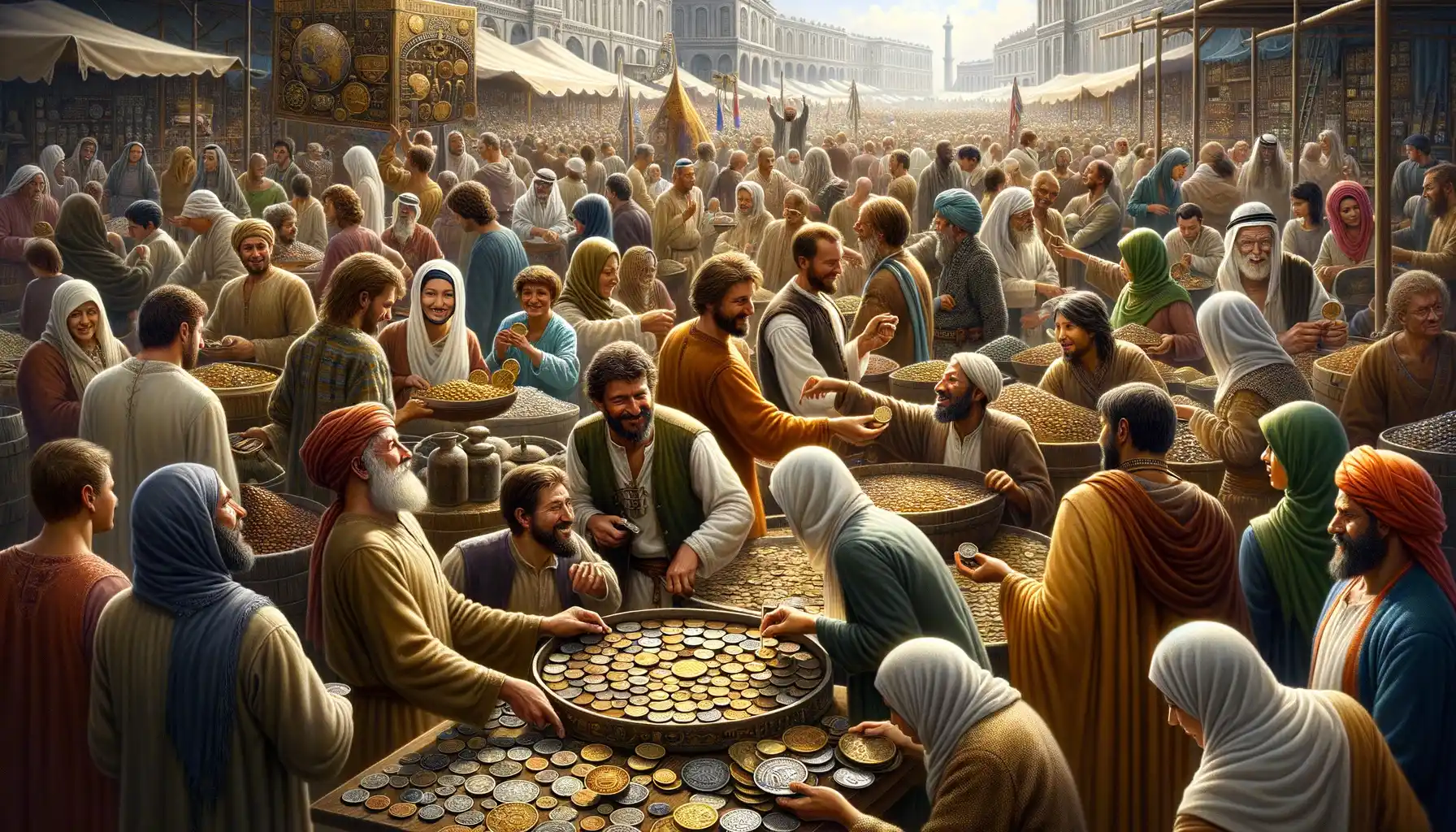
How Coins Became the Silent Negotiators of Ancient Markets
Imagine bustling markets brimming with the scent of spices, the shimmer of silk, and the clang of hammered metal. In this vivid chaos, coins became the ultimate peacemakers—silent but powerful negotiators. With their portable, universally recognized value, they transformed the messy haggling of bartering into streamlined transactions.
Take, for instance, the Roman Empire, where traders could exchange a handful of gleaming denarii for fine Egyptian linen or fragrant Indian pepper. No need to count livestock or haul heavy sacks of grain—coins turned cumbersome trades into efficient exchanges and spurred long-distance commerce. It wasn’t just about convenience; coins fostered trust. A stamped silver piece from Athens carried the promise of authenticity and value, helping merchants do business even with strangers from faraway lands.
- Want a Persian rug? A few gold staters would suffice.
- Need amphoras of olive oil? Pay with minted bronze as cargo ships unload at the docks.
Coins didn’t just buy goods; they became symbols of economic reliability in a rapidly expanding world. It’s no wonder trade flourished when currency spoke louder than words.
The Ripple Effect of Coin-Based Trade Networks
Ancient coins weren’t just tools—they were catalysts. By simplifying transactions, they allowed entire trade networks to bloom like never before. Picture the Silk Road, stretching thousands of miles, alive with merchants carrying coins from empires they had never set foot in. A Roman aureus might end up funding a trade deal in China; a Greek drachma could travel as far as India. Each coin told a story of connectivity and ambition.
The design of coins added another layer to their reach. Imagine receiving payment embossed with the face of Alexander the Great. That coin wasn’t only currency—it was propaganda, a subtle reminder of power and influence extending over untold miles. Coins wove together cultures, economies, and societies, creating ripple effects that could be felt across continents. Every trade agreed upon in clinking metal notes pushed the boundaries of what ancient civilizations thought possible.
Legacy of Ancient Coinage in Modern Economic Systems
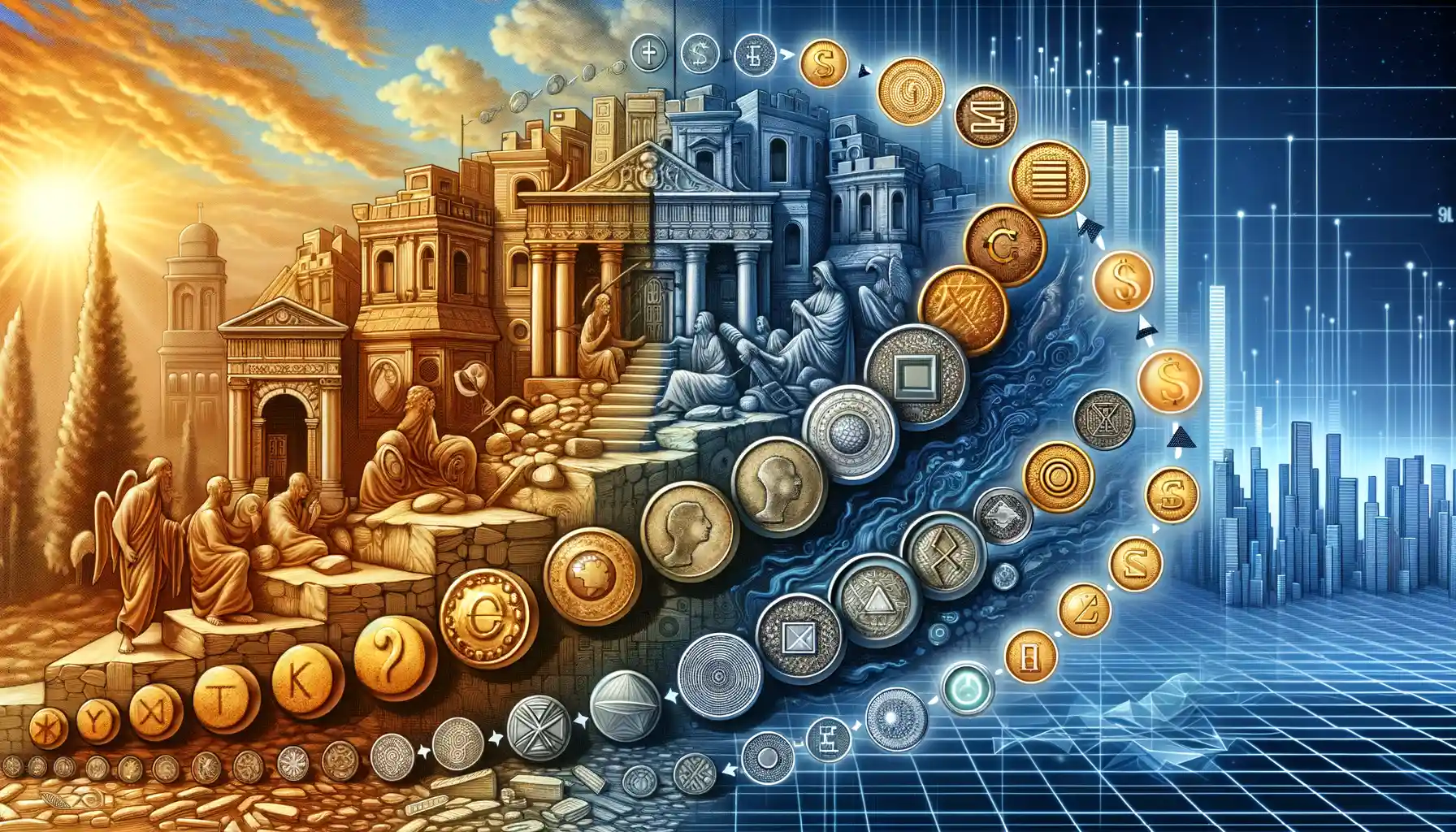
The Echoes of Ancient Coins in Today’s Money World
Picture this: every coin jingling in your pocket owes its DNA to ancient ancestors. The influence of ancient coinage doesn’t just whisper from dusty museum displays—it roars in the very fabric of modern economies. From the standardized weights of ancient Greek drachmas to the trust-building inscriptions on Roman denarii, these coins were more than metal—they were ground-breaking innovations that shaped what we now call “the economy.”
In fact, today’s central banks echo lessons taught by ancient mints. For instance:
- Metal Content Standards: Ever notice how even modern coins have precise sizes and weights? This practice traces back to ancient coins, ensuring fair trade across vast empires.
- Symbols of Sovereignty: Just as Roman emperors plastered their portraits on coins for legitimacy, countries today print leaders’ faces or national symbols on currency.
It’s wild, isn’t it? A piece of bronze or silver could unite traders thousands of miles apart—and centuries later, inspire the digital currencies reshaping our wallets. Call it a ripple effect, but the legacy of ancient coinage feels less like history, and more like a living artifact in your pocket.

